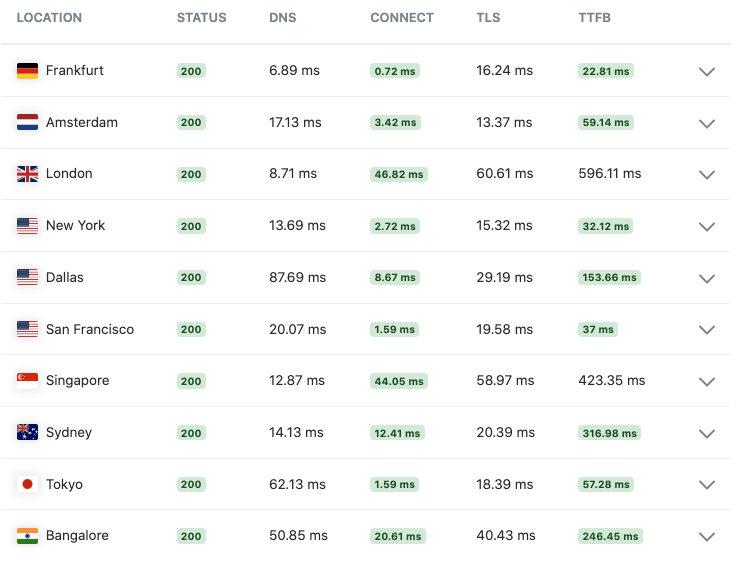Table of Contents
Introduction
This is not going to be an article on why you should or shouldn’t choose WordPress multisite for your project. But rather, I’m going to assume you’ve already made that decision.
There are a few key differences when it comes to choosing WordPress multisite hosting. Mulitsite’s can often become quickly bloated, both from a pure storage point of view, and from a database point of view.
I’m going to show you what makes WordPress multisite hosting different from regular WordPress hosting, what you should consider, how to measure a good host, what the limitations are, and hopefully help you to choose the best host for you.
Let’s jump in.
What Makes WordPress Multisite Hosting Different than Regular WordPress Hosting?
The first thing we need to understand is what makes WordPress multisite hosting different than regular WordPress hosting. If we want a fast WordPress site, with minimal plugins, it’s imperative that we understand the difference.
Typically when it comes to multisite hosting, there are a slue of things to consider that are outside the realm of just a regular WordPress site.
With a multisite install, there can be a lot of domains, media, languages and more. Taking into account all of these things when choosing a host is critical. For instance, if you run a multisite with multiple languages you may have different needs than a multisite that has a lot of brand sites.
In the example above, a multisite with a bunch of different languages may require a totally different server configuration than one without. Why is this? Well, because likely their readership and visitors are coming from all over the world.
Whereas a multisite that has a lot of brands underneath it, may all have readers and visitors from a similar part of the world.
So, here are some things we need to consider.
Wildcard SSL
If your multisite uses domains instead of directories (IE subsite.site.com instead of site.com/subsite), you’ll want to make sure your host can handle wildcard SSLs. This just allows every site on your multisite install to use an SSL without needing any workarounds.
Since each site can have its own separate domain (IE subsite.com instead of subsite.site.com), while being a part of the multisite environment a wildcard SSL will make configuration much simpler.
Storage Space
Multisite installs can get bloated pretty quickly. With a half a dozen or more installs, your entire site can require 50GB of storage or more (especially if you host videos of any kind).
You’ll want to make sure that your host can easily upgrade your storage with low effort, and won’t just cut you off should you accidentally go over.
If your multisite really has a lot of media, you may want to consider offloading to an Amazon S3 bucket, for really cheap storage.
Support
Running a WordPress multisite is often complicated, and can be confusing. There are a ton of configuration settings, and things you may not even be aware of until something goes wrong.
Making sure your host has a 24/7 responsive support team is imperative.
Physical Location
Generally you want your web server to be in close physical proximity to your visitors. By this I mean the literal, physical web server. The closer the physical location, the faster visitors will get the content.
A good web host allows you to choose the location of your server, or smartly serves content based on where the visitor is coming from.
Dedicated Hosting
Without going into too much detail, there are two types of hosts: shared, and dedicated. When running a multisite it is crucial to always go with a dedicated host.
The main difference between the two is with a shared host, your server will have a lot of other sites on it. Sometimes this is fine with a single WordPress install (although I never recommend it), but with a multisite install you’re going to want to have the server all to yourself.
Why is this?
Mainly, for security and speed reasons. With a shared server if another site isn’t using best practices, every site on the server is potentially at risk.
Database Considerations
Databases can get bloated very quickly, especially with a multisite. Think about a network of sites that each has a different language, with a different WooCommerce store.
You can imagine how many database rows this would create.
Large, bloated, databases can often cause slow queries, and make it frustrating for users when browsing your site.
There are a number of database cleanup plugins, but WP Rocket is the one I recommend.
You can also optimize your database, but this may be better done on a host level.
How to Measure a Good Host
I use the same four pillars of performance that Gijo uses at WP Speed Matters to measure WordPress multisite hosting:
- Networking (TTFB)
- Server Hardware
- Scaling
- Consistency
Networking (TTFB)
TTFB stands for Time to First Byte. It’s a measure of the network speed + the network latency.
Your host should have a TTFB of less than 300 milliseconds (ideally less than 100 if you’re testing in the same region).
Some tools you can use to test this: GTmetrix, Pingdom, Google PageSpeed Insights.
Here is a TTFB breakdown from a client using a very custom WordPress Multisite hosting setup (from KeyCDN Tools):

Server Hardware
Your server should have good hardware to execute PHP scripts, and SQL queries as fast as possible.
To test your server hardware, you can use WP Performance Tester. It’s a plugin designed to show you how your hardware compares to the industry standards.
Ideally, your results are below the industry averages (meaning your server is faster).
Scaling
If you had a post that went viral, you would want to make sure that your server could handle the load.
There’s a ton that goes into load testing a multisite (so perhaps a post on this later).
For now, I’m not going to cover it all, but here’s a good article on load testing for WordPress multisite.
Consistency
Everything else is well and good, but if your host cannot perform everything consistently it’s no good.
Use Up Time Robot to monitor your site, for at least 24-48hrs to make sure your response time never lags.
So, Who has the Best WordPress Multisite Hosting?
Now that we know what we’re looking for in WordPress multisite hosting, who are the best hosts?
Lets take a look at what I consider to be the best 3:
- WP Engine – WP Engine makes it super simple to setup (or convert an existing site into) a multisite installation. They have all the tools, best hardware, etc. for WordPress multisite hosting. They’re a bit on the pricey end, but as the old adage goes: you get what you pay for.
- Kinsta – Kinsta allows for a lot more granular configuration of their WordPress multisite hosting. You can configure CPU, RAM, and bandwidth and pay for each on a per unit basis depending on your needs. Or you can just choose one of their default options.
- Custom Configuration – For enterprise companies, or sites that get 1M+ monthly views you’ll likely want to ditch both WP Engine or Kinsta and get your own, very customized, and specific WordPress multisite hosting. Contact me if you’re looking for this option. It will be different for every site of this size.


